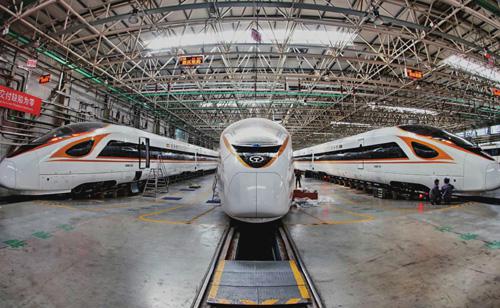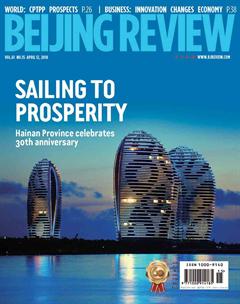China’s Development Revered

Editors Note: Javid Husain, a retired Pakistani diplomat and President of the Lahore Council for World Affairs, recently published an article in the Pakistani newspaper, The Nation, about his observations on Chinas rapid growth and suggested his country learn from Chinas experience. An edited excerpt of the article follows:
A visit to China is in many ways a humbling and instructive experience. It has been a humbling experience because of the rapid economic progress that China has achieved in such a short span of time since its great leader Deng Xiaoping launched his policies of reform and opening up to the outside world in December 1978. Thanks to this new direction, China has been able to achieve an average GDP growth rate of 10 percent per annum over the last 40 years, doubling its GDP every seven years. Consequently, as against a GDP of $300 billion in 1978, Chinas GDP was estimated to be $11.9 trillion in 2017 in nominal terms, making it the second largest economy in the world only after the United States. Of course, in purchasing power parity terms, Chinas GDP had already overtaken the United States in 2014. Although the Chinese economy has slowed down slightly recently, its GDP grew at a rate of 6.9 percent in 2017 and the target growth rate for the current year has been fixed at 6.5 percent. If the Chinese economy continues to grow along these lines, it will become the worlds biggest economy in nominal terms by the end of the next decade.
Progress evident
The signs of this phenomenal progress hit the eye the moment one lands at the Beijing Capital International Airport. When I arrived in Beijing for the fi rst time in 1985 to assume my responsibilities as minister and deputy head of the mission at the Pakistani embassy, China had embarked upon its journey of rapid economic growth just a few years earlier. At that time, the Beijing airport was, relatively speaking, a much smaller affair just like the airport of any Third World country, which China was at the time. But I soon learnt during my three-year stay in Beijing that Dengs policies had ignited the Chinese economic engine, hurtling it on a trajectory of rapid economic growth. China had already successfully carried out the fi rst phase of reforms in the rural sector and in 1985, and was getting ready for the implementation of reforms in the urban sector. The successful implementation of these reforms, which unleashed the productive energies of the Chinese people through the introduction of market forces and the element of competition into the Chinese economy, accelerated Chinas economic growth. By 1998, Chinas GDP had increased fi ve times compared with 1978.
China has not looked back since. I have paid several visits to China even after 1988 when I was transferred to Islamabad after I completed my diplomatic assignment in Beijing. Every visit was a reminder of the rapid strides that China was making on the road to economic progress with visible signs everywhere. My latest tour has served to reinforce my assessment that Chinas economic progress is irreversible, though it may experience some hiccups or slowdowns along the way. It is not only the airports in Beijing and Shanghai which can be compared to the best in the developed world. It is also the living standard of its people who are much better educated and much more knowledgeable than they were in the 1980s. It is also the state of transportation networks and infrastructure in general which have become highly advanced. Furthermore, Chinas progress is refl ected in the high quality of its scientists, its engineers, its IT experts and its scholars in general. China has become the biggest trading nation in goods in the world, refl ecting the strength of its industrial sector.
This is not to claim, however, that China has joined the ranks of the most developed countries in the world like the United States, Germany, Japan, France or Sweden. For reaching that stage of high development, China needs decades of hard work. But it is quite clear from the pronouncements of Chinese leaders, especially President Xi Jinping and Premier Li Keqiang during this years session of the National Peoples Congress, that they are fully committed to the goal of rapid economic development. They are well aware of the complexity of the task and are determined to overcome the obstacles that may confront them on the way. The Chinese people, in general, are rightly proud of their achievements in various sectors during the past four decades and highly motivated to join the ranks of advanced nations of the world through commitment and hard work. However, even under the best of circumstances, it will not be before the commencement of the second half of the current century that China will reach that stage of high development.
Learning from China
A visit to China by someone from a developing country like myself does not just bring home the visible signs of development and progress in various sectors; it is also an instructive experience as countries like Pakistan can learn a lot from China. First, China since 1978 has accorded the highest priority to the goal of rapid economic growth, subordinating everything else to this supreme national aim. In pursuance of this goal, China has sought low-risk and nonadventurous foreign and security policies with the objective of minimizing the danger of engaging in external armed conflict. Second, through appropriate strategies, it has achieved high national saving and investment rates to accelerate its economic growth. Third, China has paid the maximum attention to the task of educating its people, especially the younger generation, which represents its future. China is fully aware that in the modern knowledge-based world, high levels of literacy and education are indispensable conditions for rapid economic progress. Fourth, China has consistently allocated a high proportion of its resources to the building up of its physical infrastructure, especially its transportation system including roads and railways. It now boasts the most protracted network of bullet trains in the world, along with high-quality highways and means of transport to facilitate commerce and economic progress. Fifth, Chinese leaders have focused on providing the right type of regulatory framework for encouraging economic growth through reforms in industrial, agricultural and fi nancial sectors. Sixth, Chinas leadership has placed a high degree of premium on political stability and continuity of policies in the country in the interest of sustained economic progress at a rapid pace.
Chinas policies as mentioned above have enabled it to achieve high rates of economic growth. Pakistan, on the other hand, has adopted precisely the opposite policies with predictably unsatisfactory results. Instead of determining rapid economic growth as the supreme national aim, we have become a security state where economic development in practical terms is accorded a low priority. We have also been prone to following highrisk and adventurous security and foreign policies. Our national saving and investment rates are pathetically low and are depressing our economic growth rate. Education, which is the premium mobile of economic development, has received inadequate attention and low priority in the allocation of the nations resources. Why wonder about our low literacy rate? That there is no world-class university or research center in Pakistan speaks volumes about our misplaced priorities. Our physical infrastructure is in poor shape. Successive governments in Pakistan have failed to provide a regulatory framework calculated to encourage economic growth in a corruption-free environment. Finally, the country has suffered from political instability and lack of continuity of policies due to a variety of factors for most of this time. Unless we take determined steps to overcome these shortcomings, our country will remain trapped at a low-level stage of economic development for the foreseeable future.

